Comparison: Filling Holes when Replacing Cabinet or Furniture Hardware
Today I’m sharing my favorite way of filling holes when replacing cabinet or furniture hardware. I’ll also share how it compares to other popular wood fillers! It’s crazy!
Get more ideas for repairing old furniture here!
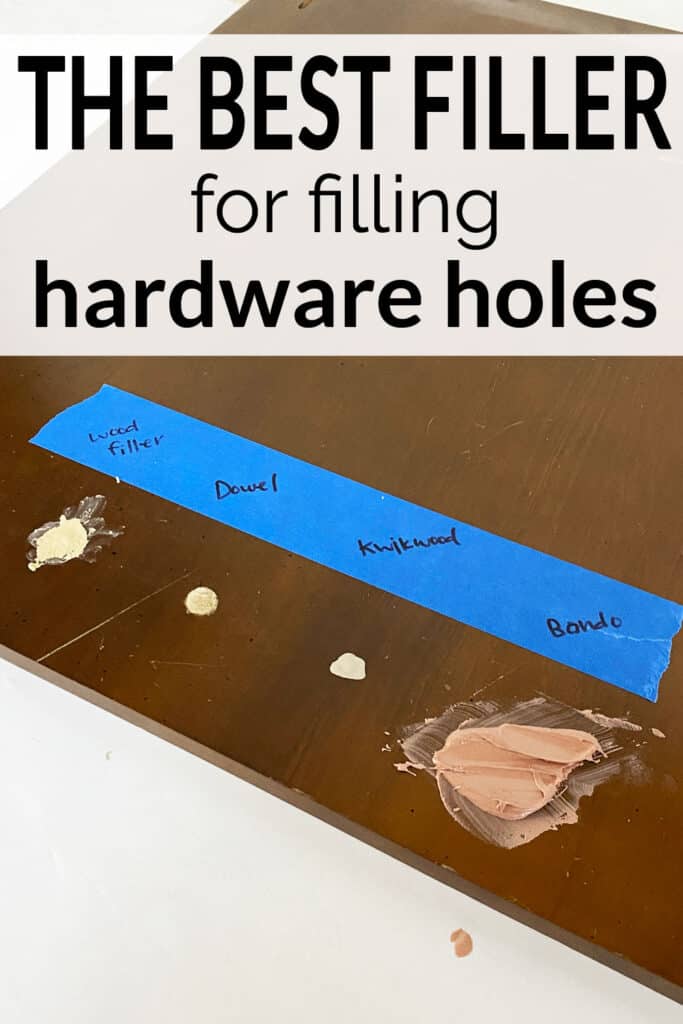
My favorite method only requires an hour of dry time, doesn’t shrink or crack… or leave air bubbles behind and this material can be drilled into too!
Oh, and it isn’t real stinky! Any guesses as to what it is?? I’ll also share why this is my preferred method of filling holes later on in this post.
As an Amazon Associate, I earn from qualifying purchases. I also may earn from other qualifying purchases with other companies or get free product to review and use. All opinions are my own.
Fillers Tested In this Experiment
- Wood Filler
- Bondo
- Dowels
- KwikWood
The Best Way to Fill Holes when Replacing Cabinet or Furniture Hardware
KwikWood! Have you heard of it?
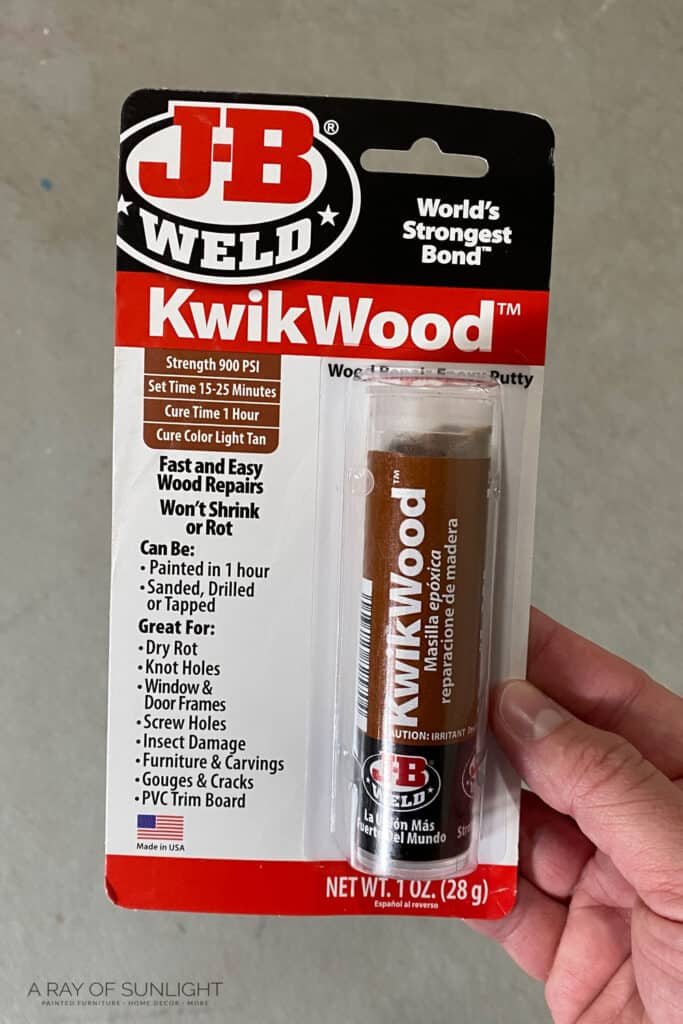
This stuff is in my opinion, the best way to fill hardware holes on cabinets and drawers. It has the consistency of clay and comes wrapped up in plastic and inside of a little tube.
How to Use KwikWood
To use it you just
- Cut off how much material you want to use.
- Then you knead it together until the stuff in the middle and the stuff on the outside is completely mixed together. This takes just a minute or two.
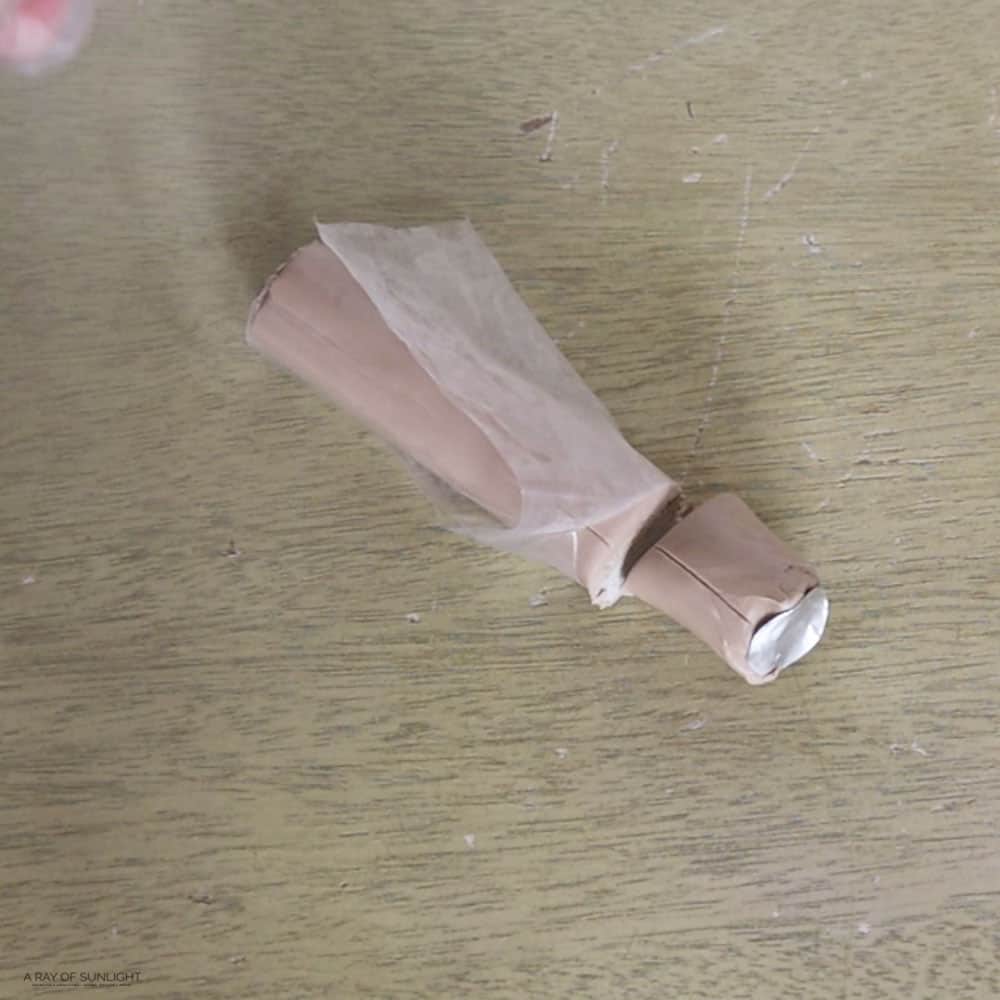
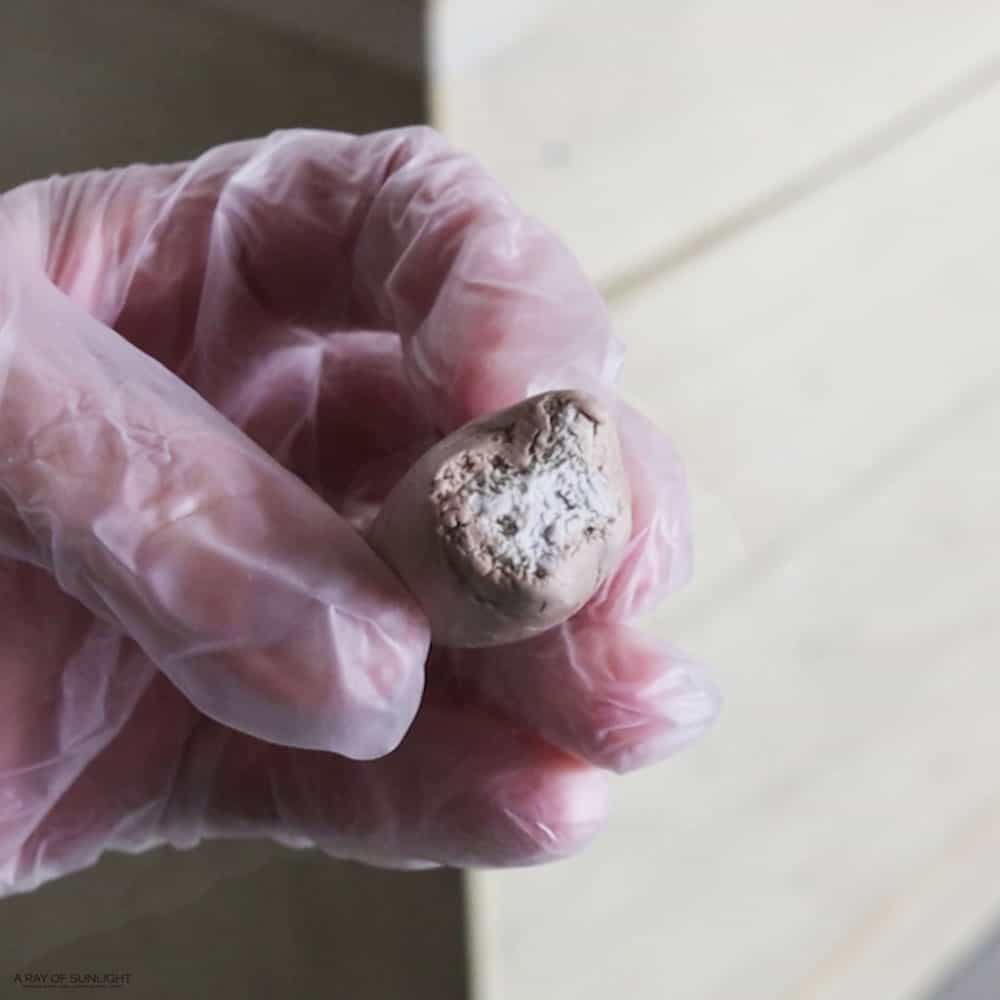
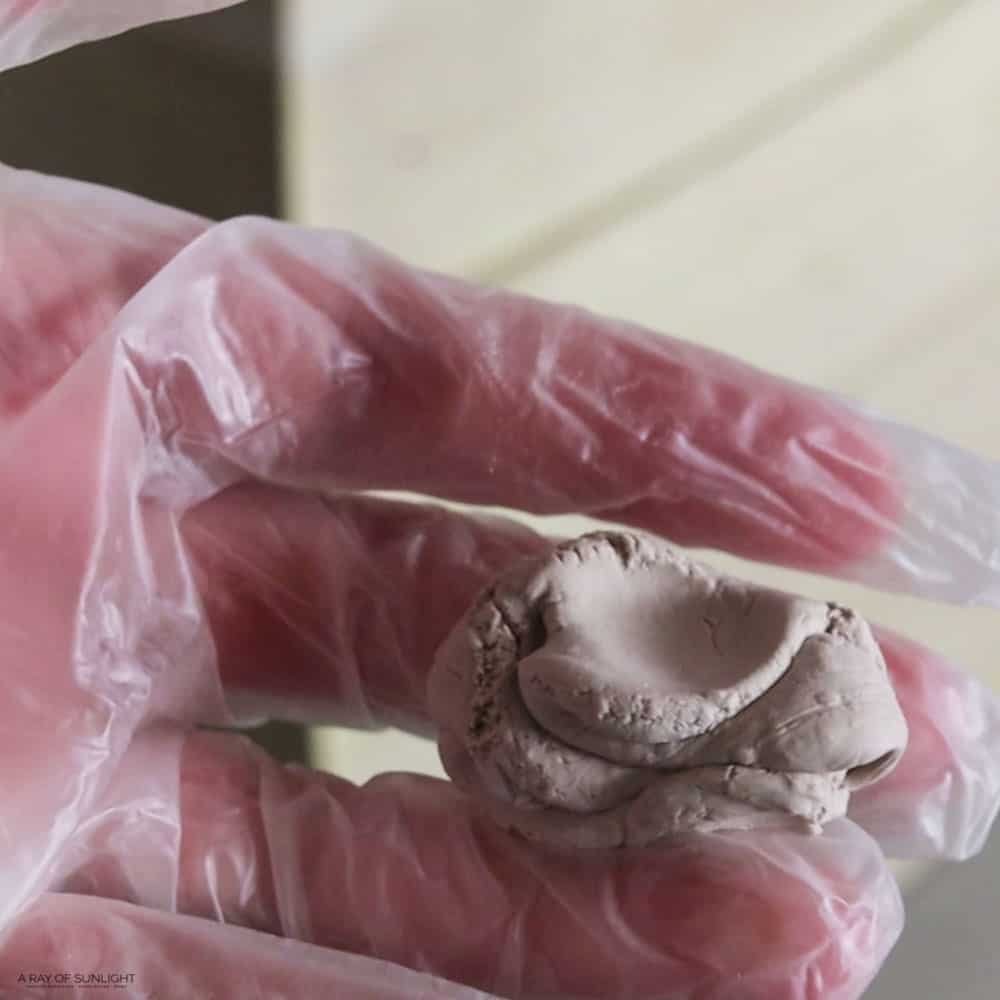
Then you can push it into the old holes until they are completely filled in. I personally like to overfill them slightly and make sure the hole is completely filled up.
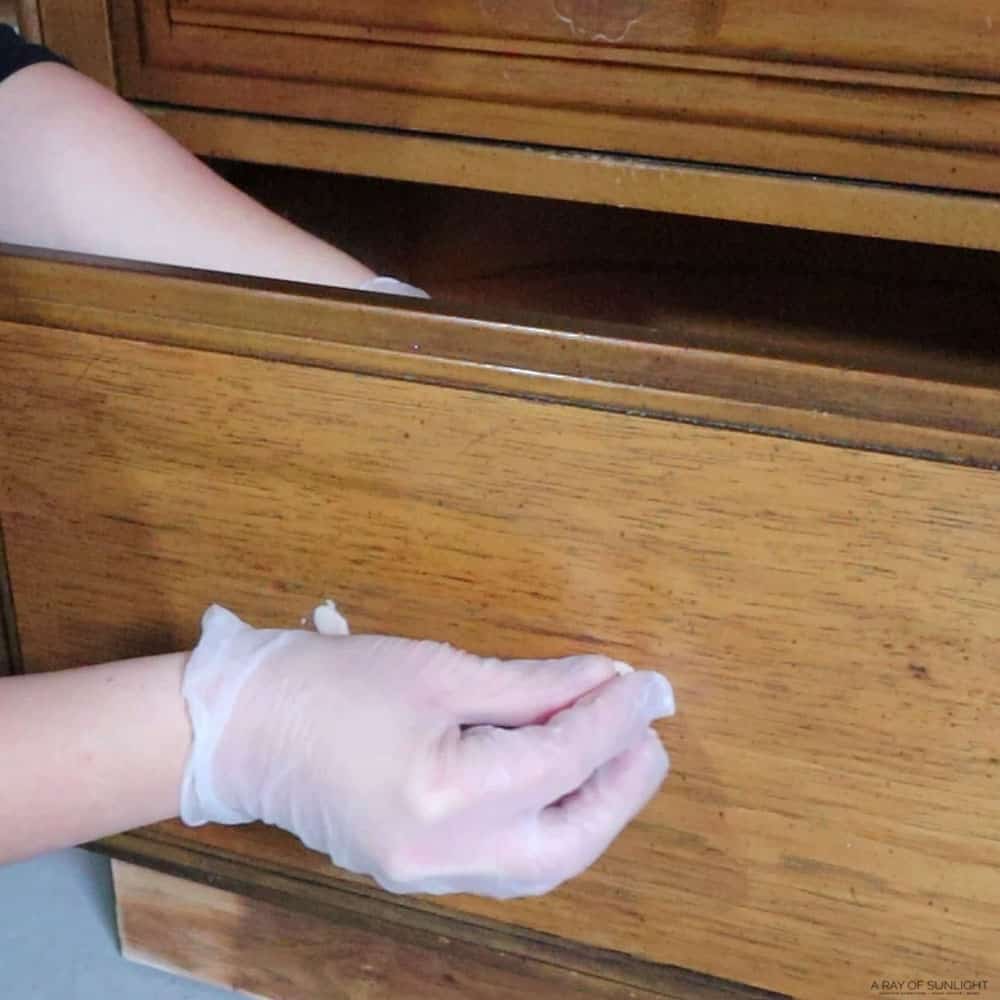
Unlike Bondo, KwikWood doesn’t have a strong smell, and it has a 15 minute work time after it is mixed together before it starts to harden up too much.
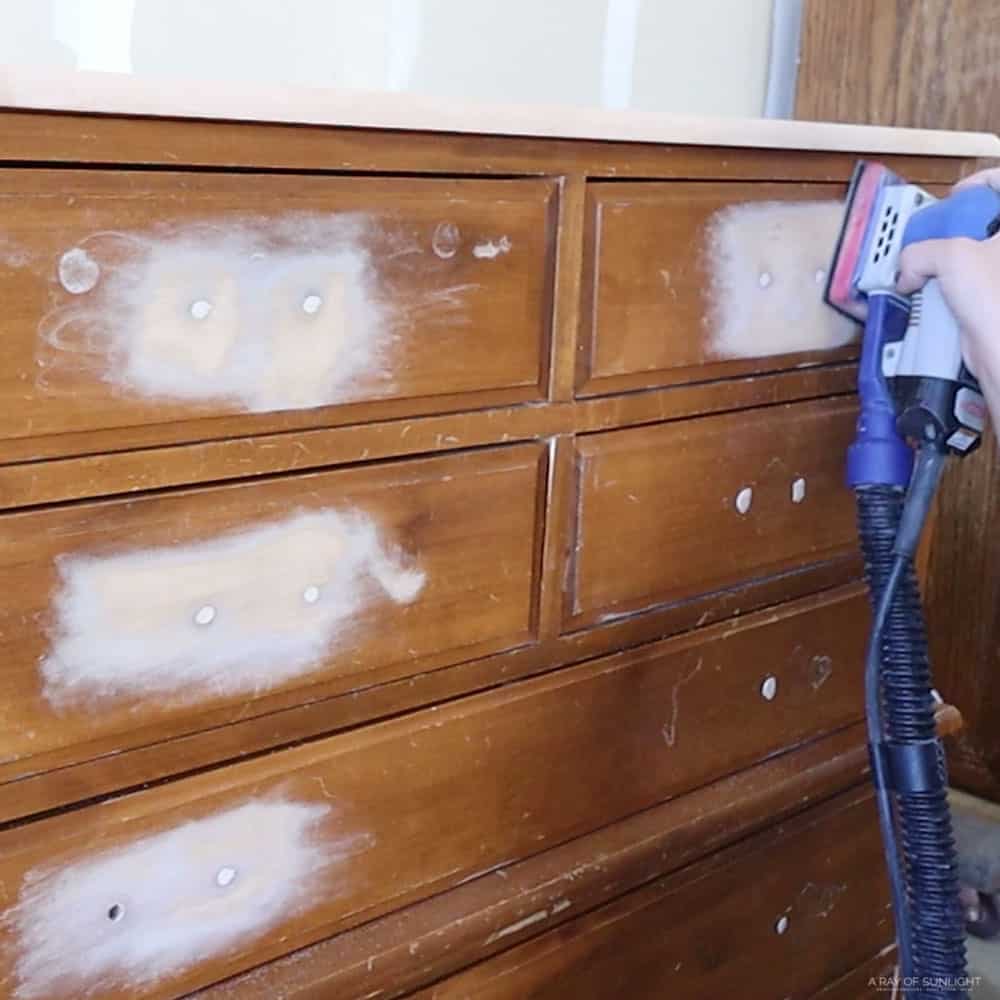
Then, after an hour the KwikWood is dry, hard as a rock! At that point, I like to sand it down flush with the wood around it to create a seamless repair.
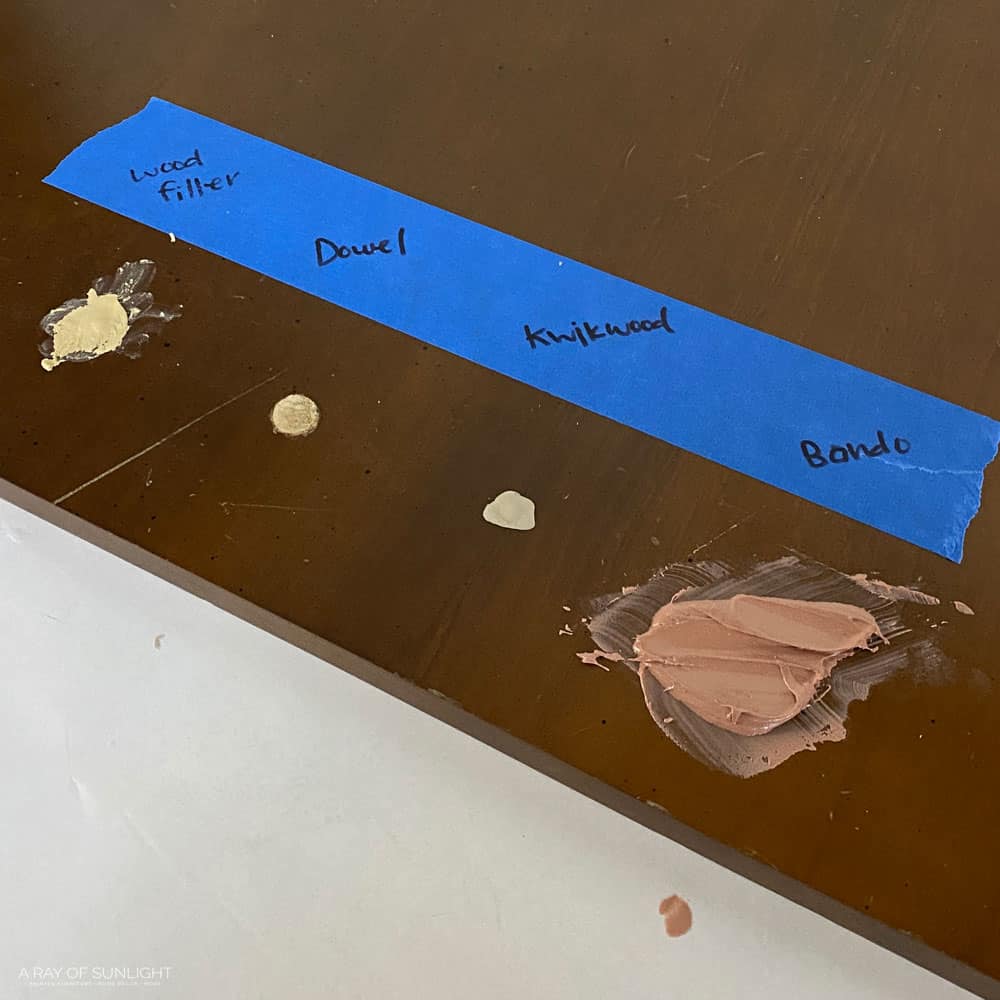
Why is KwikWood the Best Way to Fill Hardware Holes?
The other options I’ve seen and tried before just don’t match up KwikWood in my opinion. I tested them all out together so you could kind of see what I’m talking about..
Wood Filler
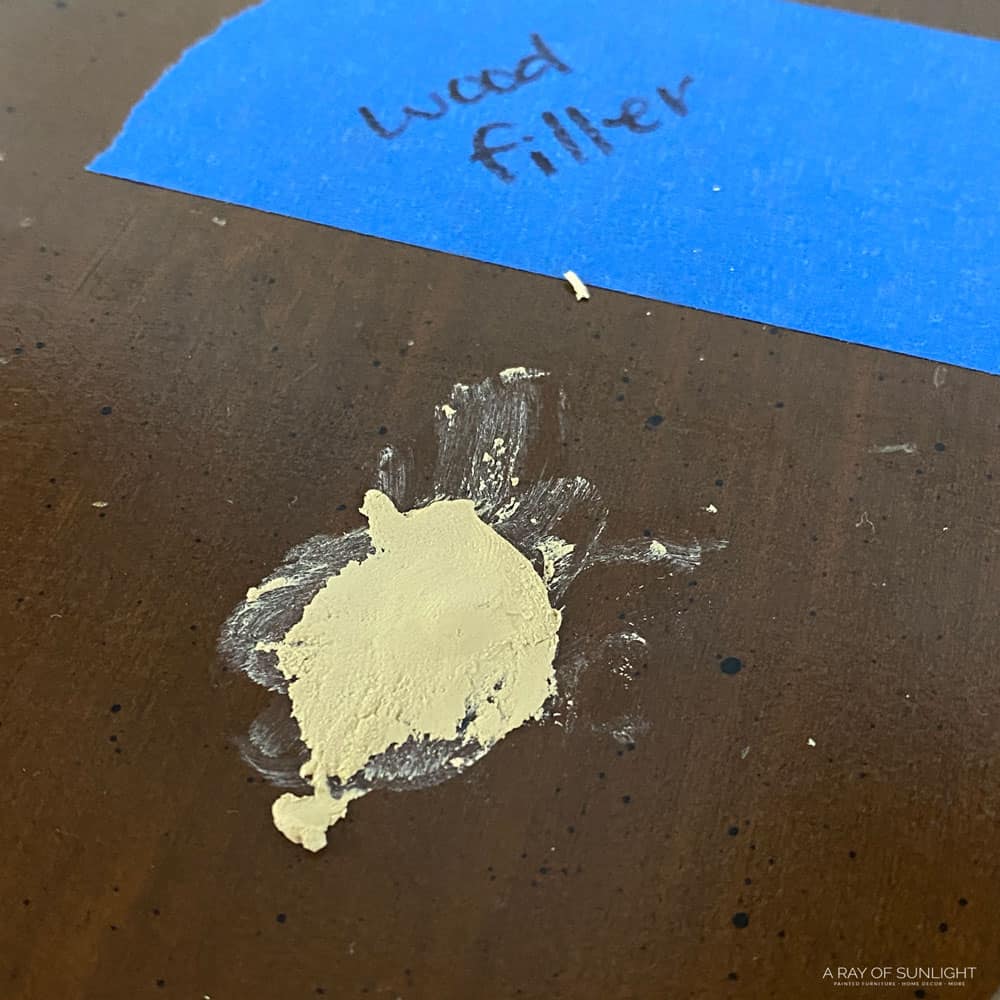
Wood filler shrinks as it dries, and even if you overfill it, it somehow still manages to continue to sink back into the hole, so you can still see the outline of the hole… Even after you paint over it.
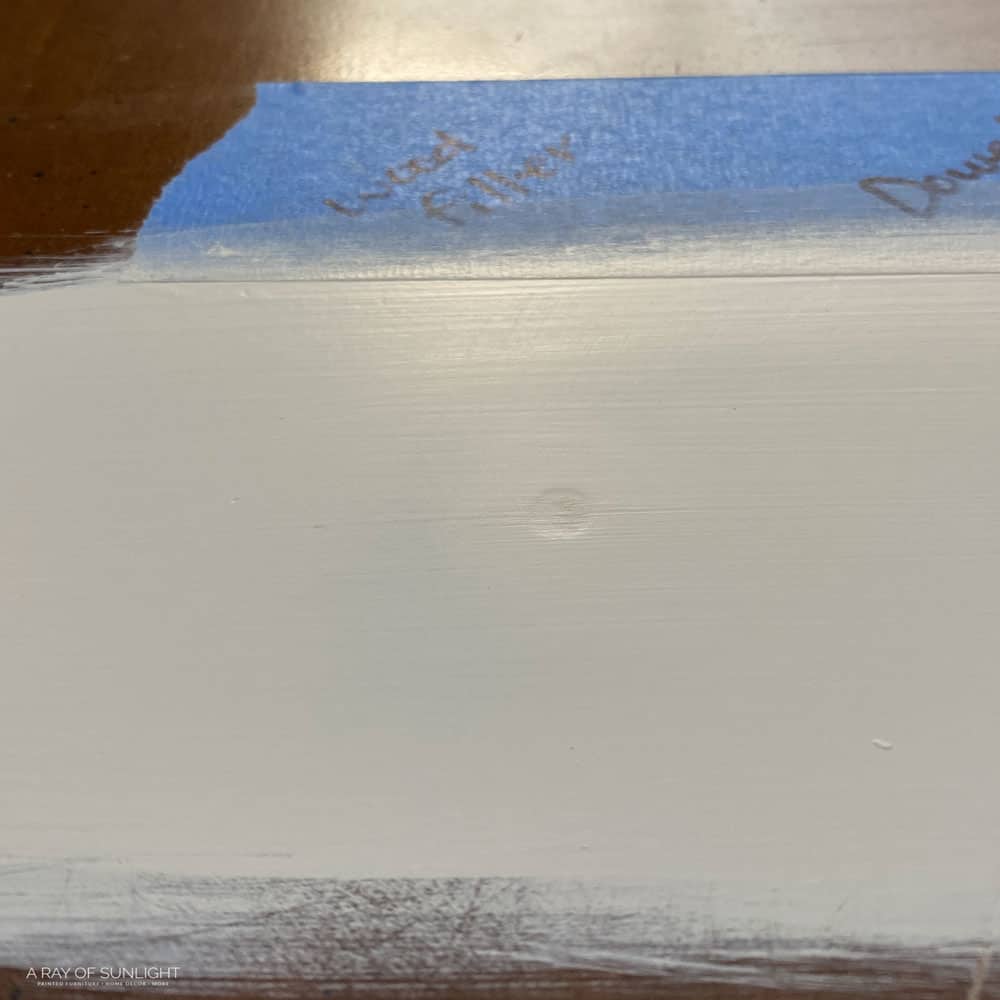
Bondo
I used Bondo for a long time, but it’s really stinky, and it’s messy and it’s only workable for a few minutes.
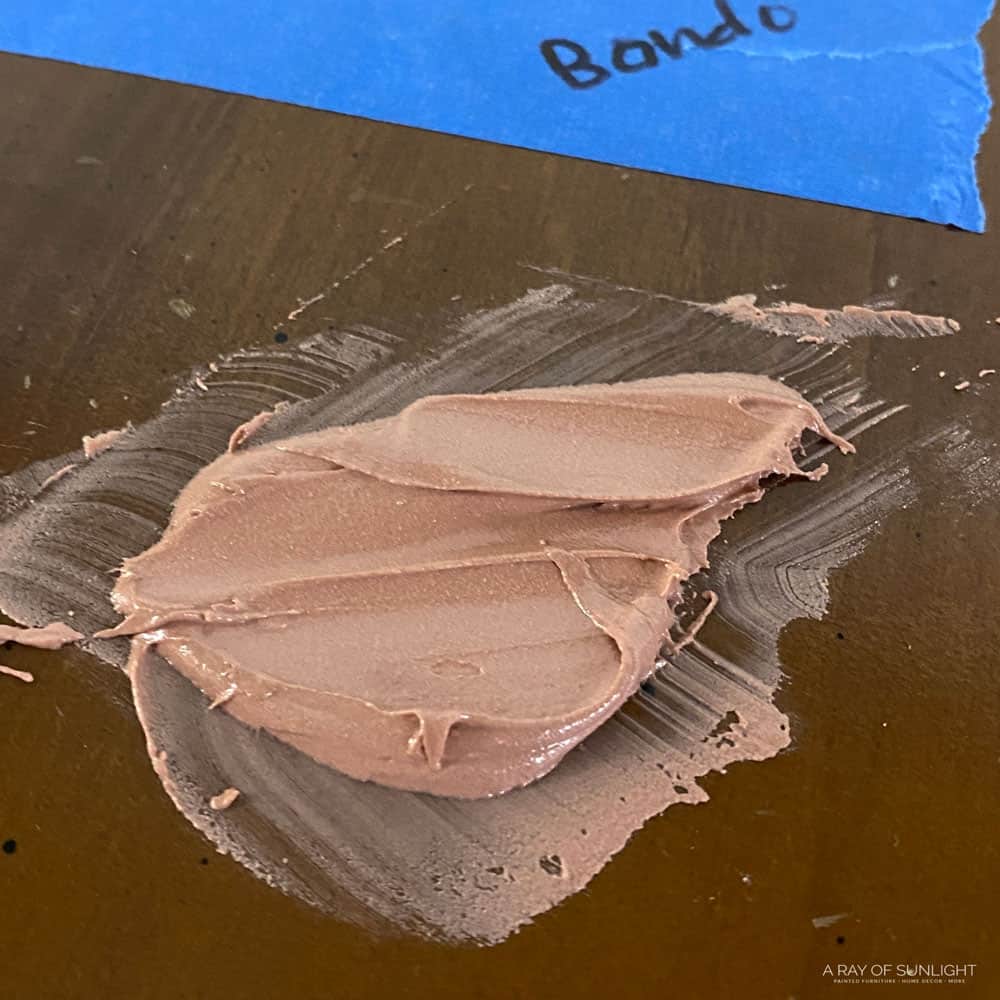
Oh and you need to have something to mix it on.
Bondo also gets air bubbles in it, so I found myself filling the holes with bondo, and sanding it down, and then filling it with wood filler… and then sanding it again.
And even then I still struggled to make the hole disappear completely after I painted over it.
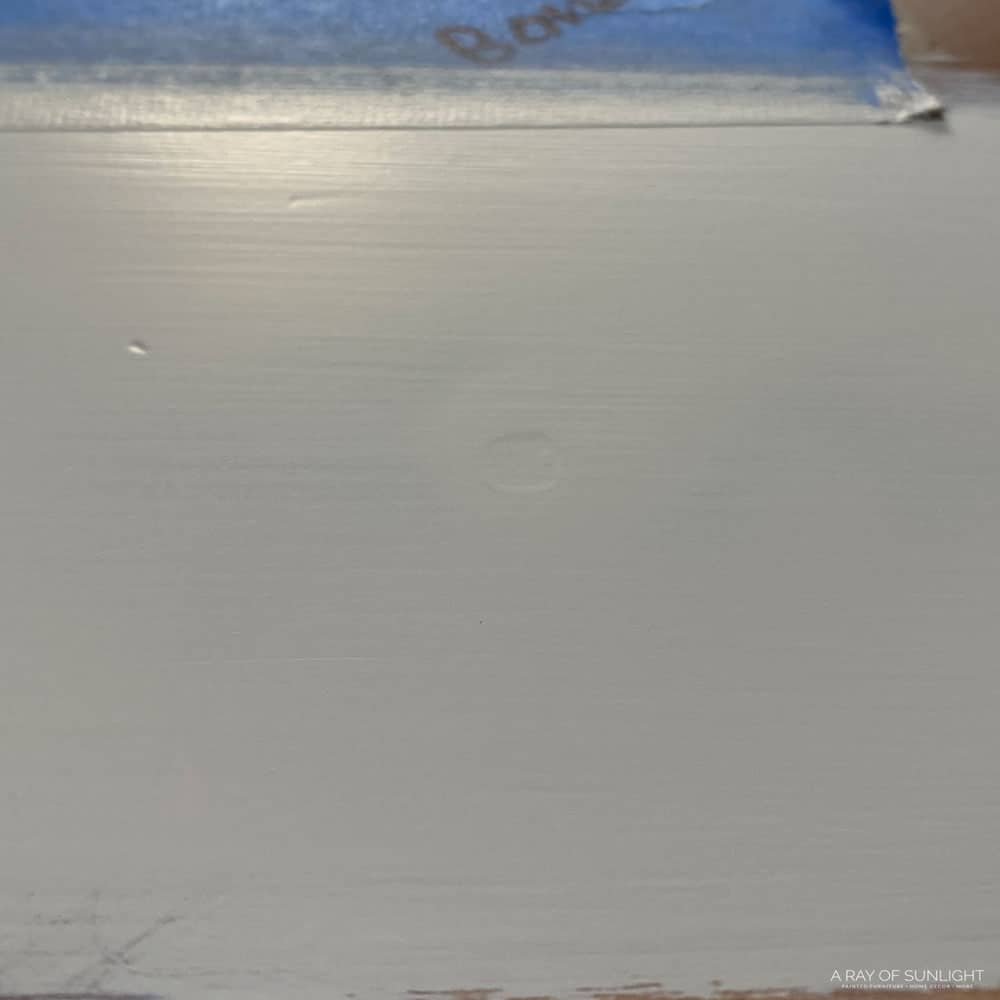
I love Bondo for fixing furniture, but not for filling hardware holes. Check out my honest Bondo wood filler review here to learn more.
Dowels
Dowels can be a pain because you either need the perfect size of a dowel, or you have to drill the hole to the right size for the dowel.
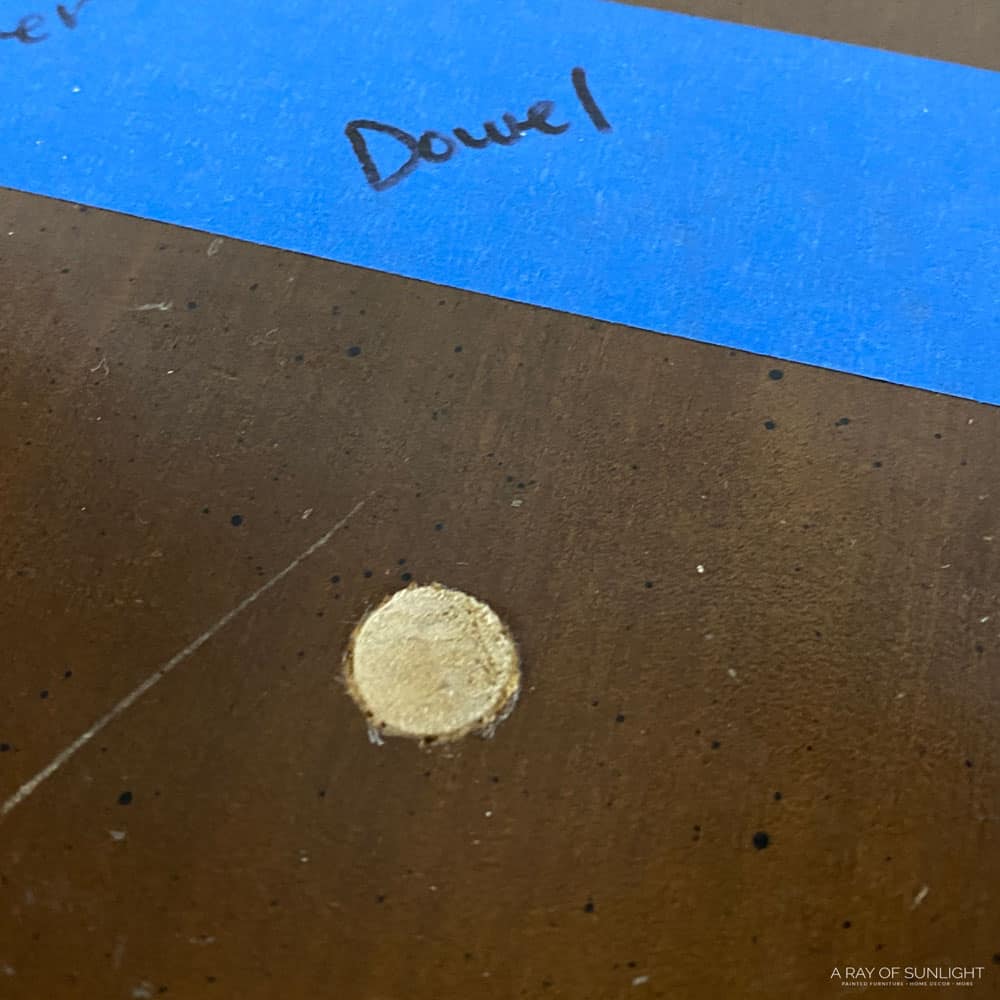
And then you have to cut the dowels to the right size. Once it’s in place, you still have to fill in the seam or any chips, unless you’ve done it perfectly.
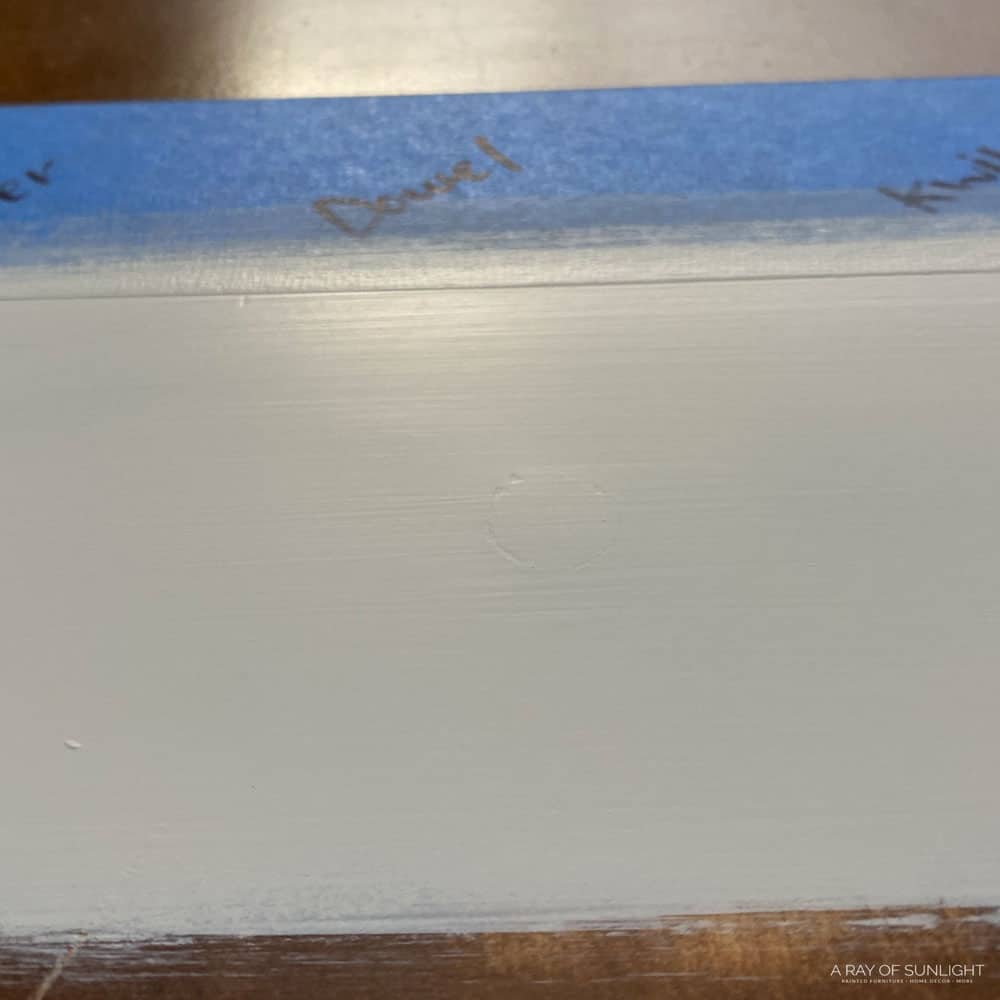
KwikWood
KwikWood is a one and done option.
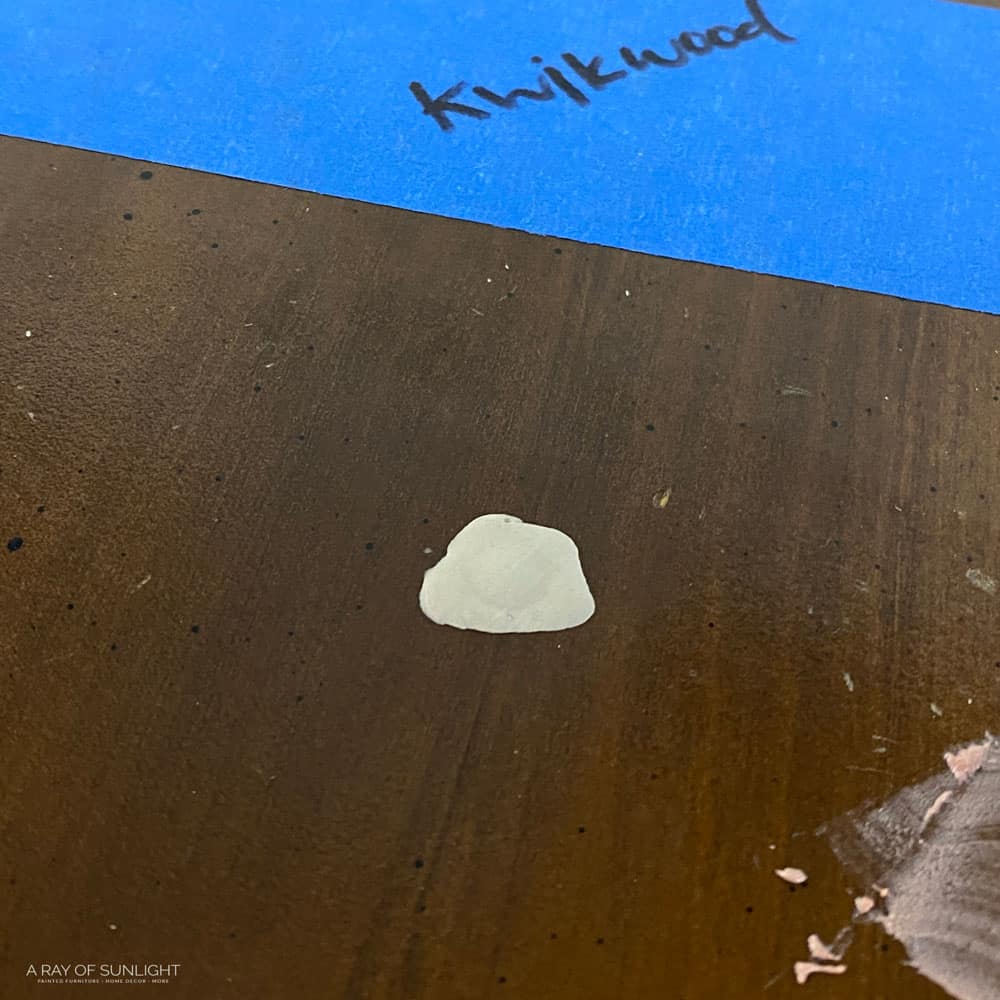
It fills the hole perfectly, no more wood filler needed. And it creates a repair that you can’t see at all once it is painted.
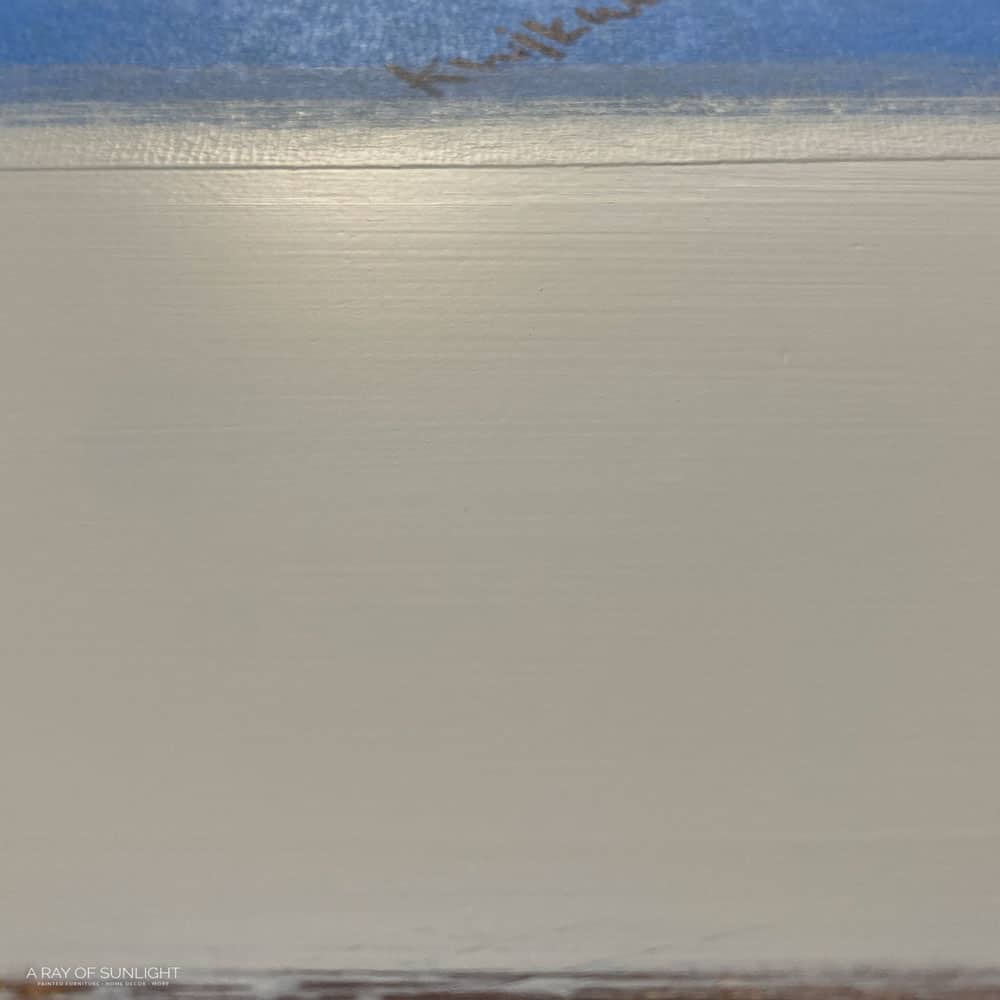
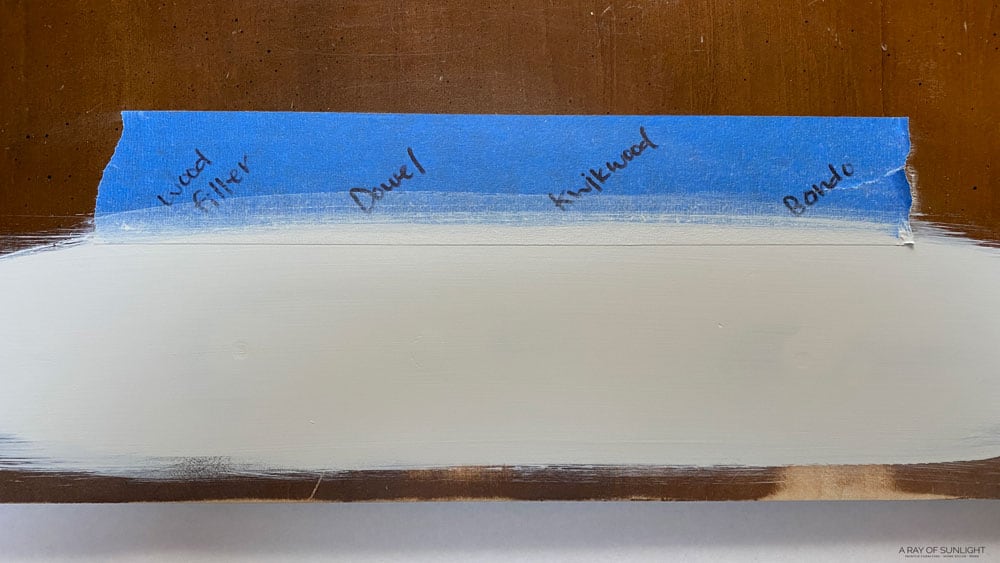
That’s it! Do you have more tips and tricks or any questions? Please share them in the comments!
Watch the video of this comparison here:
More Furniture Hardware Resources
- How to Paint Hardware
- How to Change Hardware on a Dresser
- How to Clean Old Furniture Hardware
- How to Drill New Holes for Hardware
Get the Secrets!
Grab this super convenient How to Repair Furniture Ebook with all of our secrets on how to repair furniture for only $14.
You can print it out and have instant access whenever you come across damaged furniture, and know exactly how to fix it!
Click on the picture of the book to purchase!
Follow us on YouTube to get more tips for painting furniture.
Or share your project with us on our Facebook Group and be part of our community. See you there!

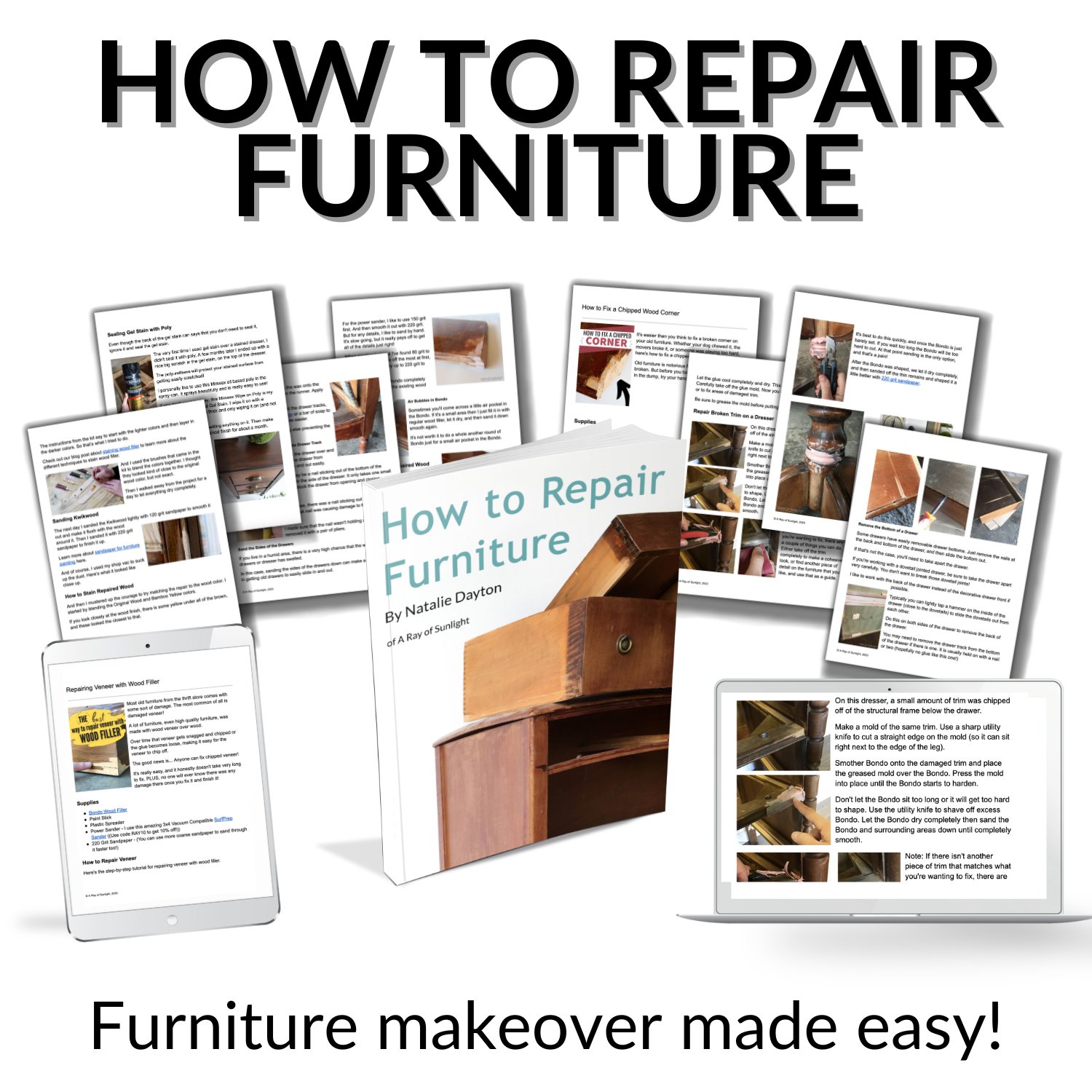
I’ve never heard of KwikWood! Sounds to good to be true. I don’t use Bondo and Wood Filler dries so quickly and my fingers are ruined. So happy to learn about a great product. Thanks for doing the comparison!
I’m new to all of this but if u have an antique dresser n the wood is peeling off the front would yiu use this kwik wood? Then sand and then how would you paint it back to the original wood color?
For peeling veneer, I prefer to use Bondo, but if it’s only a small area, the KwikWood works great!
Then you can use gel stain to stain it back to the original wood color.
Natalie,
Thanks so much for the KwikWood demonstration. When filling a crack or depression on a painted tabletop, do you still prefer KwikWood for the best result?
Thank you!
for small repairs, or thin repairs, Bondo is better because it’s thinner and is easier to get into the crack.
Sharlee,
I acquired a nice dresser that had some chips out of the top. We used bondo which worked great, but now I want to leave the top natural (we sanded finish off) with just a whitewash but worry that the spot where bondo was patched is going to stick out like a sore thumb. Any advice you can give me will be appreciated!
Hey Susan, you can try to use our Wood Stain Repair tutorial to make the Bondo look like the whitewashed wood.
Hi! After using Kwikwood would you use primer before painting over? I’m not sure if kwikwood absorbs paint differently. Thanks!
Yes, for best results prime the Kwikwood and all of the furniture to get an even finish.
I just make sure the filler on the inside doesn’t poke out of the other side of the hole on the inside. That’s all I do.
have you ever tried the Kwikwook on a stained cabinet instead of painted?
I have. It will not stain like the wood does, so you can use this wood stain repair trick to make it blend with the stain around it.